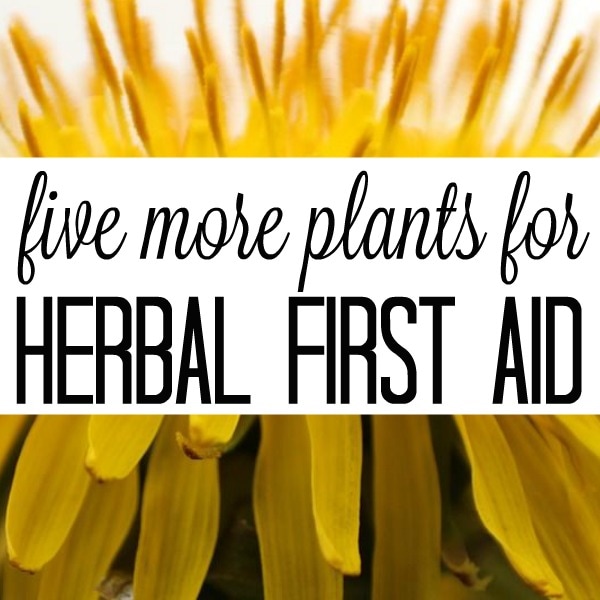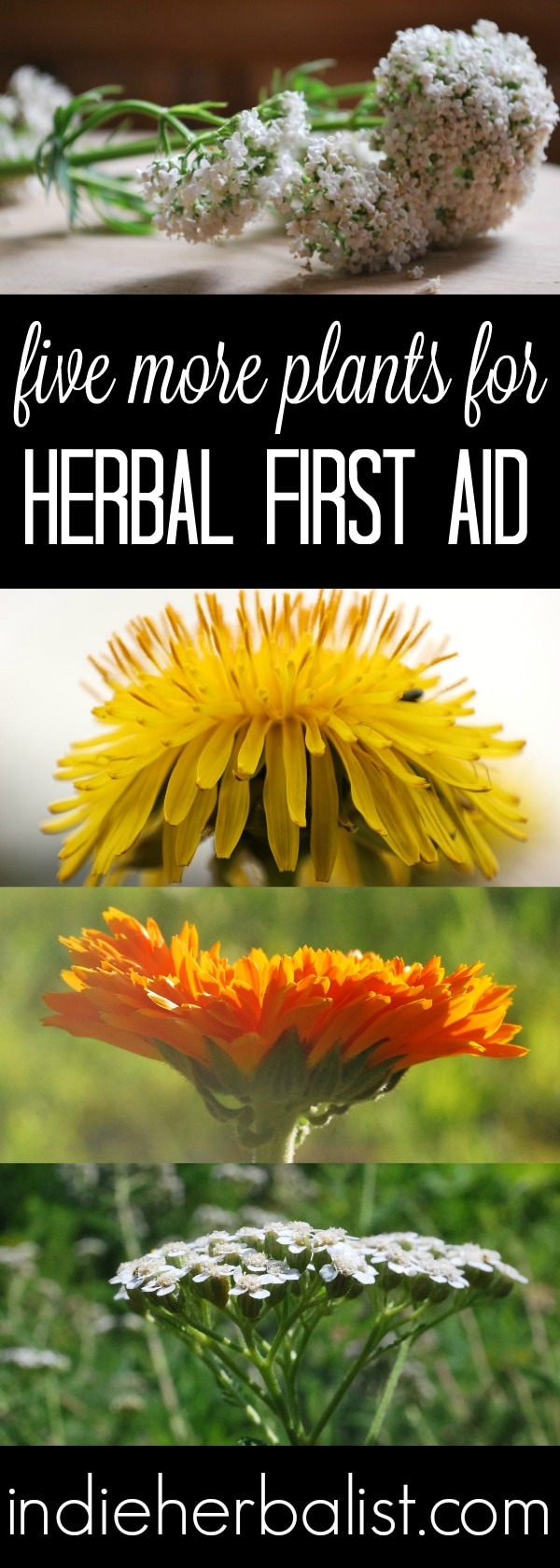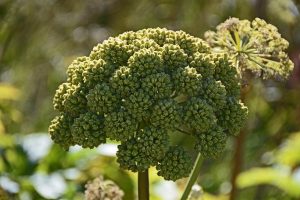Links contained in this post and elsewhere on my website may include affiliate links. When you make a purchase through these links, I earn a commission at no additional cost to you. I only link to products and services that I love - and that I think you will love, too!
Read Time:2 Minute, 33 Second
Mullein, valerian, dandelion, plantain, and calendula are five excellent first aid herbs to become familiar with. Let’s take a look at each along with their herbal actions.
Mullein
Verbascum thapsus
Mullein is well known as an ingredient in topical oils meant for the ears, but it’s a good plant to have on hand for a number of other things. For respiratory support, it’s traditionally used for dry, irritated coughs where there may be a feeling of tightness in the lungs. It’s also very useful as a muscular and skeletal support herb! Part of this is because mullein has a reputation for being very lubricating for joints and tissues, and it was traditionally thought of as a pain relief herb especially suited for cramps, spasms, and physical injuries. It’s a lymphatic herb that supports the immune system.
Herbal Actions: expectorant, demulcent, antispasmodic, vulnerary, lympphatic
Mullein is well known as an ingredient in topical oils meant for the ears, but it’s a good plant to have on hand for a number of other things. For respiratory support, it’s traditionally used for dry, irritated coughs where there may be a feeling of tightness in the lungs. It’s also very useful as a muscular and skeletal support herb! Part of this is because mullein has a reputation for being very lubricating for joints and tissues, and it was traditionally thought of as a pain relief herb especially suited for cramps, spasms, and physical injuries. It’s a lymphatic herb that supports the immune system.
Herbal Actions: expectorant, demulcent, antispasmodic, vulnerary, lympphatic
Valerian
Valeriana officinalis
Valerian is a potent nervine, and can be useful emotional support when stress has led to nervousness and despondence. It’s often thought of as an herb to support a healthy night’s rest, but it’s a good herb to remember when there is tension, cramps, and spasms anywhere in the body. It can be added to lung support blends for this reason. It smells very strongly, and although most people find it more or less calming, it can cause some people to feel more alert and awake instead.
Herbal Actions: nervine, hypnotic, antispasmodic, carminative, hypotensive, emmenagogue
Valerian is a potent nervine, and can be useful emotional support when stress has led to nervousness and despondence. It’s often thought of as an herb to support a healthy night’s rest, but it’s a good herb to remember when there is tension, cramps, and spasms anywhere in the body. It can be added to lung support blends for this reason. It smells very strongly, and although most people find it more or less calming, it can cause some people to feel more alert and awake instead.
Herbal Actions: nervine, hypnotic, antispasmodic, carminative, hypotensive, emmenagogue
Dandelion
Taraxacum officinale
Dandelion is an excellent herb for liver support, and most people never learn much about it beyond that. It’s another surprisingly versatile herb, and- considering how prolific it is- it’s a fantastic herb to really learn well. Dandelion is a very cooling herb. For skin support, it’s helpful when imbalances are showing as hot, red and pink inflammation – think acne, abscesses, or even eczema. It was traditionally used for kidney and bladder imbalances where stones, edema, or chronic infection might be some of the patterns expressed, and was also used for chronic muscle pain.
Herbal Actions: diuretic, hepatic, cholagogue, laxative, bitter
Dandelion is an excellent herb for liver support, and most people never learn much about it beyond that. It’s another surprisingly versatile herb, and- considering how prolific it is- it’s a fantastic herb to really learn well. Dandelion is a very cooling herb. For skin support, it’s helpful when imbalances are showing as hot, red and pink inflammation – think acne, abscesses, or even eczema. It was traditionally used for kidney and bladder imbalances where stones, edema, or chronic infection might be some of the patterns expressed, and was also used for chronic muscle pain.
Herbal Actions: diuretic, hepatic, cholagogue, laxative, bitter
Plantain
Plantago spp.
Plantain is in my herbal first aid kit because it is traditionally thought of as a “drawing” herb that helps to clean up cuts, wounds, and infected areas. It’s thought of as cooling and moistening, but also astringent and has been used historically for burns, poison ivy, and insect bites and stings. Poultices, eyewashes, compresses, and mouthwash are just a few ways to use plantain topically. It’s also nice to have plantain handy as a tea for kidney/bladder support and respiratory health.
Herbal Actions: vulnerary, expectorant, astringent, diuretic
Plantain is in my herbal first aid kit because it is traditionally thought of as a “drawing” herb that helps to clean up cuts, wounds, and infected areas. It’s thought of as cooling and moistening, but also astringent and has been used historically for burns, poison ivy, and insect bites and stings. Poultices, eyewashes, compresses, and mouthwash are just a few ways to use plantain topically. It’s also nice to have plantain handy as a tea for kidney/bladder support and respiratory health.
Herbal Actions: vulnerary, expectorant, astringent, diuretic
Calendula
Calendula officinalis
Calendula is another useful herb for topical preparations and has traditionally been used for burns, rashes, bruises, cuts, etc. It’s one of my favorite lymphatic herbs, and also is great to have on hand for a variety of digestive and respiratory support roles.
Herbal Actions: lymphatic, vulnerary, emmenagogue, cholagogue
Calendula is another useful herb for topical preparations and has traditionally been used for burns, rashes, bruises, cuts, etc. It’s one of my favorite lymphatic herbs, and also is great to have on hand for a variety of digestive and respiratory support roles.
Herbal Actions: lymphatic, vulnerary, emmenagogue, cholagogue
All the best,
Agatha




